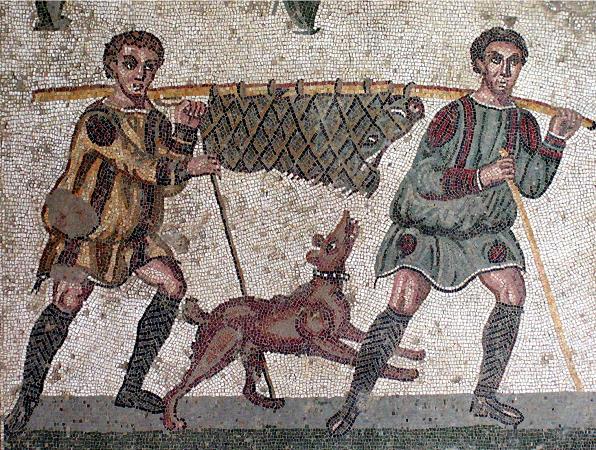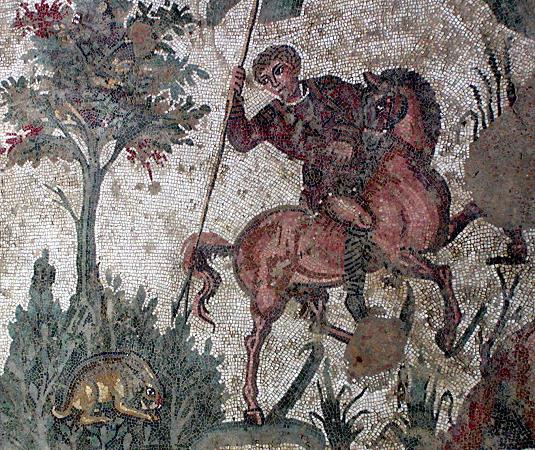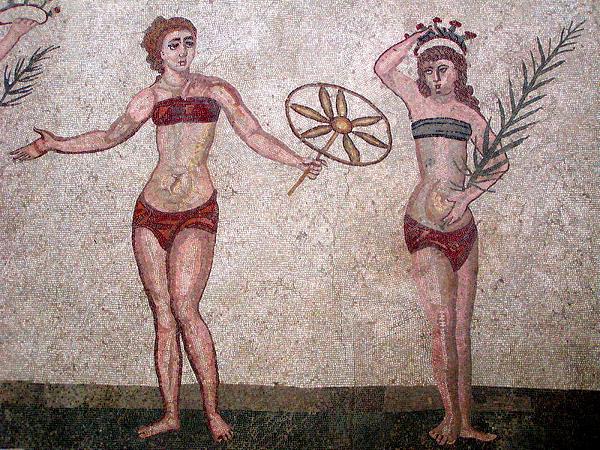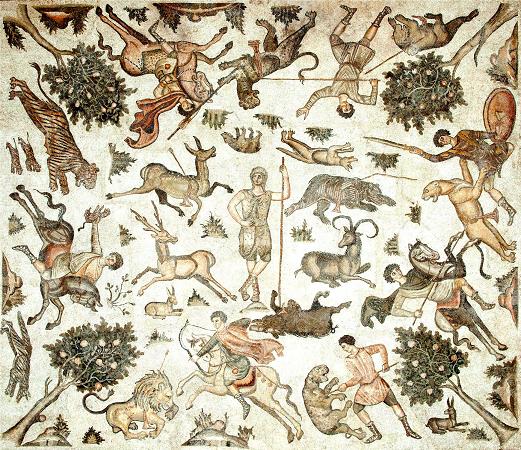Mosaic. A mosaic is a pattern or image made of small regular or irregular pieces of colored stone, glass or ceramic, held in place by plaster / mortar, and covering a surface. Mosaics are often used as floor and wall decoration, and were particularly popular in the Ancient Roman world. Mosaic today includes not just murals and pavements, but also artwork, hobby crafts, and industrial and construction forms. Mosaics have a long history, starting in Mesopotamia in the 3rd millennium BC. Pebble mosaics were made in Tiryns in Mycenean Greece; mosaics with patterns and pictures became widespread in classical times, both in Ancient Greece and Ancient Rome. Early Christian basilicas from the 4th century onwards were decorated with wall and ceiling mosaics. Mosaic art flourished in the Byzantine Empire from the 6th to the 15th centuries; that tradition was adopted by the Norman Kingdom of Sicily in the 12th century, by the eastern-influenced Republic of Venice, and among the Rus. Mosaic fell out of fashion in the Renaissance, though artists like Raphael continued to practice the old technique. Roman and Byzantine influence led Jewish artists to decorate 5th and 6th century synagogues in the Middle East with floor mosaics. Figurative mosaic, but mostly without human figures, was widely used on religious buildings and palaces in early Islamic art, including Islam's first great religious building, the Dome of the Rock in Jerusalem, and the Umayyad Mosque in Damascus. Such mosaics went out of fashion in the Islamic world after the 8th century, except for geometrical patterns in techniques such as zellij, which remain popular in many areas. Modern mosaics are made by artists and craftspeople around the world. Many materials other than traditional stone, ceramic tesserae, enameled and stained glass may be employed, including shells, beads, charms, chains, gears, coins, and pieces of costume jewelry. Traditional mosaics are made of small cubes of roughly square pieces of stone or hand made glass enamel of different colours, known as tesserae. Some of the earliest mosaics were made of natural pebbles, originally used to reinforce floors. Mosaic skinning is done with thin enameled glass and opaque stained glass. Modern mosaic art is made from any material in any size ranging from carved stone, bottle caps, and found objects. From Pompeii, Casa di Orfeo National Archaeological Museum, Naples The earliest known examples of mosaics made of different materials were found at a temple building in Abra, Mesopotamia, and are dated to the second half of 3rd millennium BC. They consist of pieces of colored stones, shells and ivory. Excavations at Susa and Chogha Zanbil show evidence of the first glazed tiles, dating from around 1500 BC. However, mosaic patterns were not used until the times of Sassanid Empire and Roman influence. Mythological subjects, or scenes of hunting or other pursuits of the wealthy, were popular as the centrepieces of a larger geometric design, with strongly emphasized borders. Pliny the Elder mentions the artist Sosus of Pergamon by name, describing his mosaics of the food left on a floor after a feast and of a group of doves drinking from a bowl.Both of these themes were widely copied. Greek figural mosaics could have been copied or adapted paintings, a far more prestigious artform, and the style was enthusiastically adopted by the Romans so that large floor mosaics enriched the floors of Hellenistic villas and Roman dwellings from Britain to Dura-Europos. Most recorded names of Roman mosaic workers are Greek, suggesting they dominated high quality work across the empire; no doubt most ordinary craftsmen were slaves. Splendid mosaic floors are found in Roman villas across North Africa, in places such as Carthage, and can still be seen in the extensive collection in Bardo Museum in Tunis, Tunisia.
more...





